











Photographer: Andy Meeker
MODELS: Tori Broadbent, Laura Pereira, Sarah Shanahan, and Chloe Lefaivre
STYLIST: Catalina Correa
LAYOUT: HArmonie Chang

There is something so e ortlessly glamorous, timeless, and cool about the era of Old Hollywood. Pearl necklaces, golden dresses, bubbly drinks. Within popular culture today, remnants of this in uential time are seen everywhere - in our movies, music, and ideals. Gossip Girl, The Seven Husbands of Evelyn Hugo, and even the themes in Lana Del Rey’s music all pay homage to this era - and for good reason. The standards of this time have bridged the gap between generations, providing inspiration and entertainment to people of all ages.
There is also something comforting about looking back to a past that seems so decadent and exhilarating. Old Hollywood is sultry, luxurious, opulent, and, ultimately, pleasurable. It often feels as if this generation looks back on Old Hollywood through rose-colored glasses, with nostalgia for something they never experienced. Today, we still aspire for this e ortless beauty that the stars of this time emulated - the popularity of “quiet luxury” and the “clean girl” aesthetic are clear examples of this. Looking for inspiration for the present by looking at the past can be rewarding, but that does not mean we can negate the detrimental aspects of this time.
Social media, especially TikTok, has seen a burst of popularity the “Trad Wife” aesthetic; that is, a traditional wife. In living for their husband, re ecting scary and outdated patriarchal expectations. Old Hollywood was not all glitz and glamour - the nuclear family ideal and women’s devaluation plagued this time - and this sentiment may be re-emerging. For a generation that has made so much progress in creating a more equitable society, we must remember to view the past objectively. Yes, we can praise the eternity of this aesthetic - but we must not forget the progress made to reverse the inequities of this time.
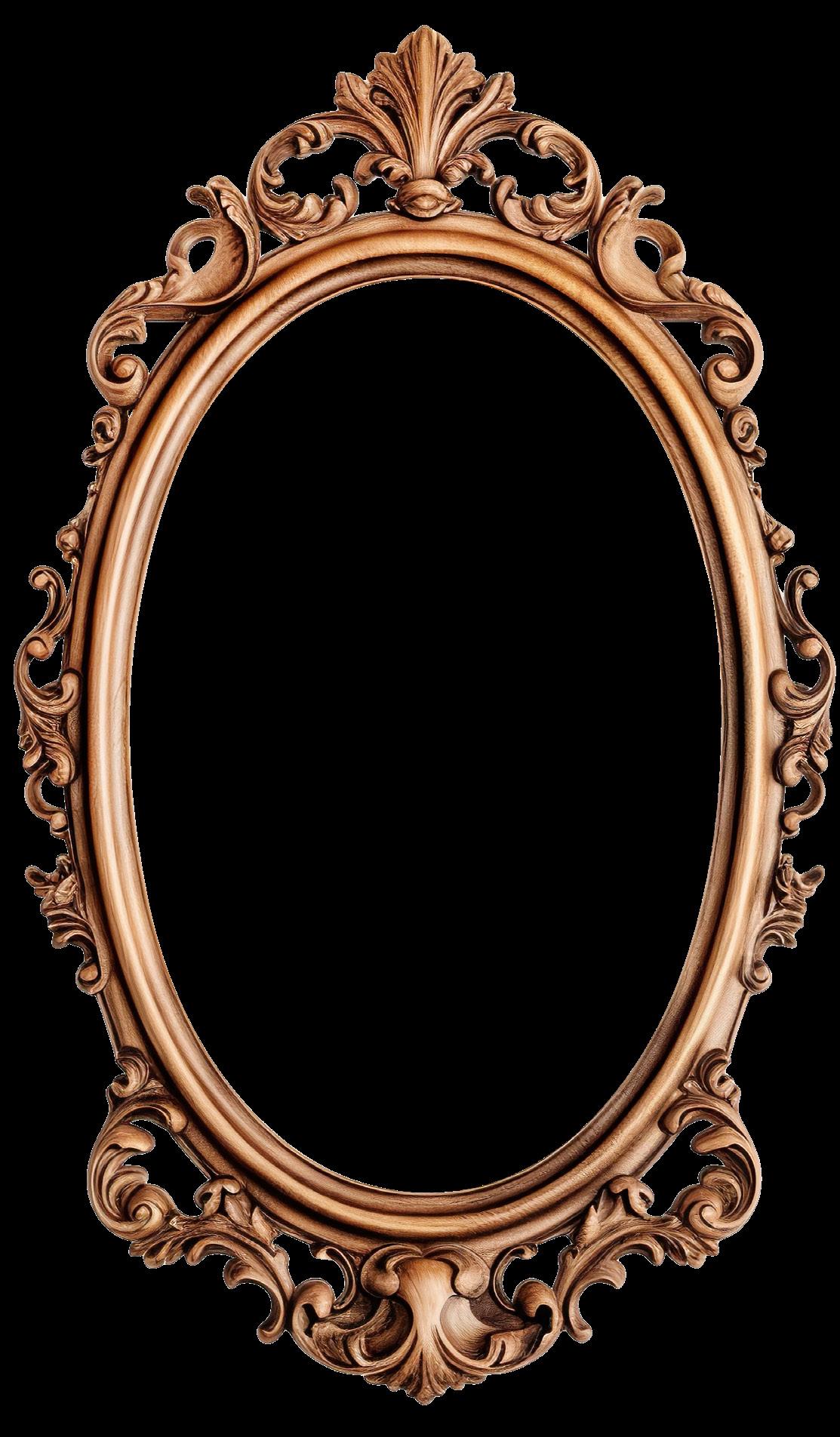

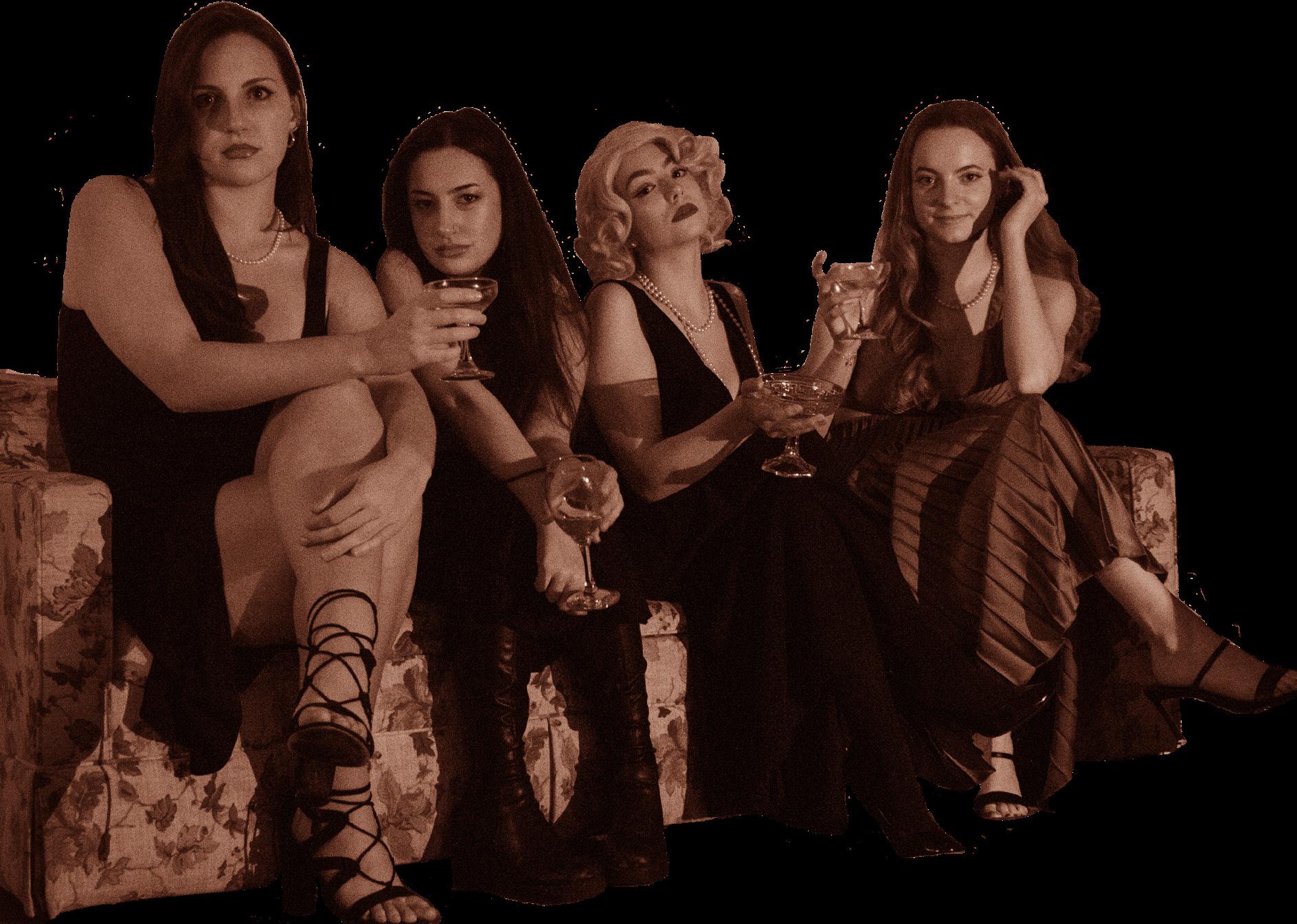




In the ever-evolving landscape of micro-trends, fashion fads constantly come and go. One such phenomenon is the emergence of the “Mob Wife” aesthetic. It marks a distinct departure from the once-popular “Clean Girl” aesthetic, shifting back to a more glamorous and daring style. The recent switch to thick French-tip nails, floor-length fur coats, and smokey makeup pushes aside the slick back buns, and no-makeup-makeup looks we’ve seen in recent years.
In the of micro-trends, fashion fads come and g such is the emergence of the “Mob Wife” aesthetic. It marks a distinct from the once-popular “Clean Girl” aesthetic, back to a more and The recent switch to thick nails, fur coats, and aside the slick back buns, and looks we ’ ve seen in recent years.
The Mob Wife aesthetic found its way onto everyone’s For You Page and algorithm, spreading the new niche all across the Internet. The internet is buzzing about the trending style & fashion looks inspired by television personalities who portrayed wives to members of the mafia. This aesthetic garners inspiration from the likes of Carmela Soprano in The Sopranos & Michelle Pfeiffer in Scarface. What’s really intriguing is the way that these women, who acted in the later 1900s to early 2000s, represent the immortality of over-the-top glamor. Although we have seen this maximalized glamor replaced by minimalist fashion in the past, it always seems to resurface.
The Mob Wife aesthetic found its way onto everyone ’ s For You and the new niche all across the Internet. The internet is about the & fash ion looks inspired television who wives to members of the mafia. This aesthetic garners inspiration from the likes of Carmela in The & Mi chelle Pfeiffer in Scarface. What’s intriguing is the way that these women, who acted in the later 1900s to 2000s, represent the of we have seen this maximalized minimalist fashion in the past, it seems to
The allure of dressing like a mob wife has to do with the personality behind it. When you participate in the Mob Wife aesthetic, it’s not just a look– it’s a mindset. The OG mob wives repre- sent the no-nonsense mindset of a strong-willed woman. This trend represents that same unyielding and determined energy.
The allure of like a mob wife has to do with the behind it. When you participate in the Mob Wife aesthetic, it’s not just a look– it’s a mindset. The OG mob wives repre sent no-nonsense mindset of a woman. This trend represents that same and determined energy.
However, it is worth acknowledging that this trend is certainly over the top and lacks practicality– rarely will you see someone waltz into class at 8:30 in the morn- ing donning a fur coat and overdone eyeshadow. However, it is still notable how the virality of the Mob Wife aesthetic can allow us to recognize the cyclical nature of fashion and the world of trends. The ever-present tendency to revert to a previous trend and spin it into something new seems to be a consistent pattern across social media. Now, the mob wife aesthetic has circled back, and with it, so has the resilient energy of the OG mob wives.
However, it is worth that this trend is over the top and lacks will you see some one into at in morn ing a fur coat and overdone However, it is the of the Mob Wife aesthetic can allow us to recog nize the nature of fashion and the The ever-present to revert to a previous trend and spin it into something new seems to a consistent pattern across social media. Now, the has circled and with it, so has the resilient energy OG wives.
Writtenby
... Gianna BenasilloLayout by ... Amelia Ferguson
Photographed by ... Elise Anstey
Modelled by ... Natalia Cruz

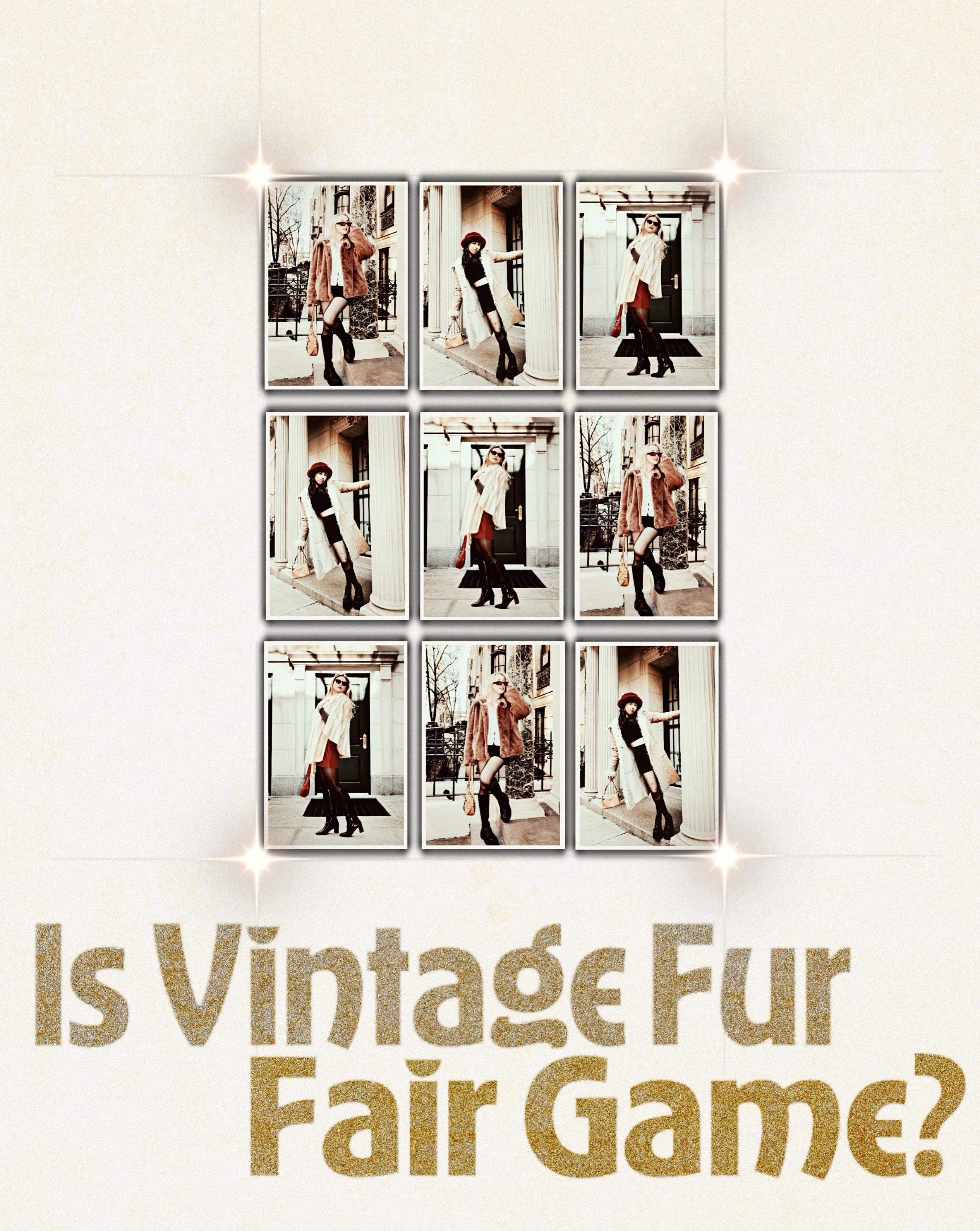
Furservedasamaterialsymbolofglamorinthe1950s–itslavishfeelandcosmicpresencedeemedanyone whodonneditanautomatichead-turner.Thecelebrityredcarpetclassicaddedinstantcharmandwas consequentlyreplicatedathomebyhousewives.Whilethelushaccessorythrivedasaclosetstaple,its existencedependedontheslaughteringofanimalstoproduceit.
AsdetailedbyPETA,“Animalsonfurfarmsspendtheirentirelivescon nedtocramped, lthywirecages. Furfarmersusethecheapestandcruelestkillingmethodsavailable,includingsu ocation,electrocution, gas,andpoison.” Theimplicationsof purchasingfurofany kindbecameclear.
Manufacturing garmentswithreal furgraduallybecame taboo,withdesigner brandssuchasGucci andCanadaGoose vowingfur-free production.Faux furhaseclipsed realfurtoday,an unmistakablemove towardsethical fashion.Yet,what abouttheendured vintageitemsmade withanimalswho irreversiblydied decadesago?Does wearingvintage furmakeyouabad person?
Thisthorny
fashiondebatehas resurgedduetothe current‘mobwife’ aesthetictrend,an odetoItalianwives’ channelingtheir versionofclass.A CollectorsWeekly articleinterviewed designerSamantha Davis,whostates, “Wearingsecond- handfurissomuch lessdetrimentalto theenvironment thanbuyinga newwooljacket is.Iwouldmuch ratherwearmy grandmother’sfur coatthat’slasted sincethe’50sthan gobuysomething fromJ.CrewthatI’m goingtowearfortwo yearsanddisposeof.
Ithasbeen
ubiquitouslydecided thatvintage,inany form,isfarmore sustainablethan buyingnewclothes. Butfornow,the socialacceptability ofvintagefuris largelyupinthe airinthemasses’ eyes.Whilemany vintagefurowners continuetolettheir itemsacquiredustin closets,abravefew sporttheirpiecesin publicwithdignity.
ModeledbyBellaReilly,NataliaCruz,MelissaBrugmann*PhotographedbyEliseAnstey* WrittenbyBellaReilly*LayoutbyAmeliaFergusonPHotography by Annabelle
HochbergModeling by Bayleigh Rabuffo
illustration & Layout by Elizabeth Sadler


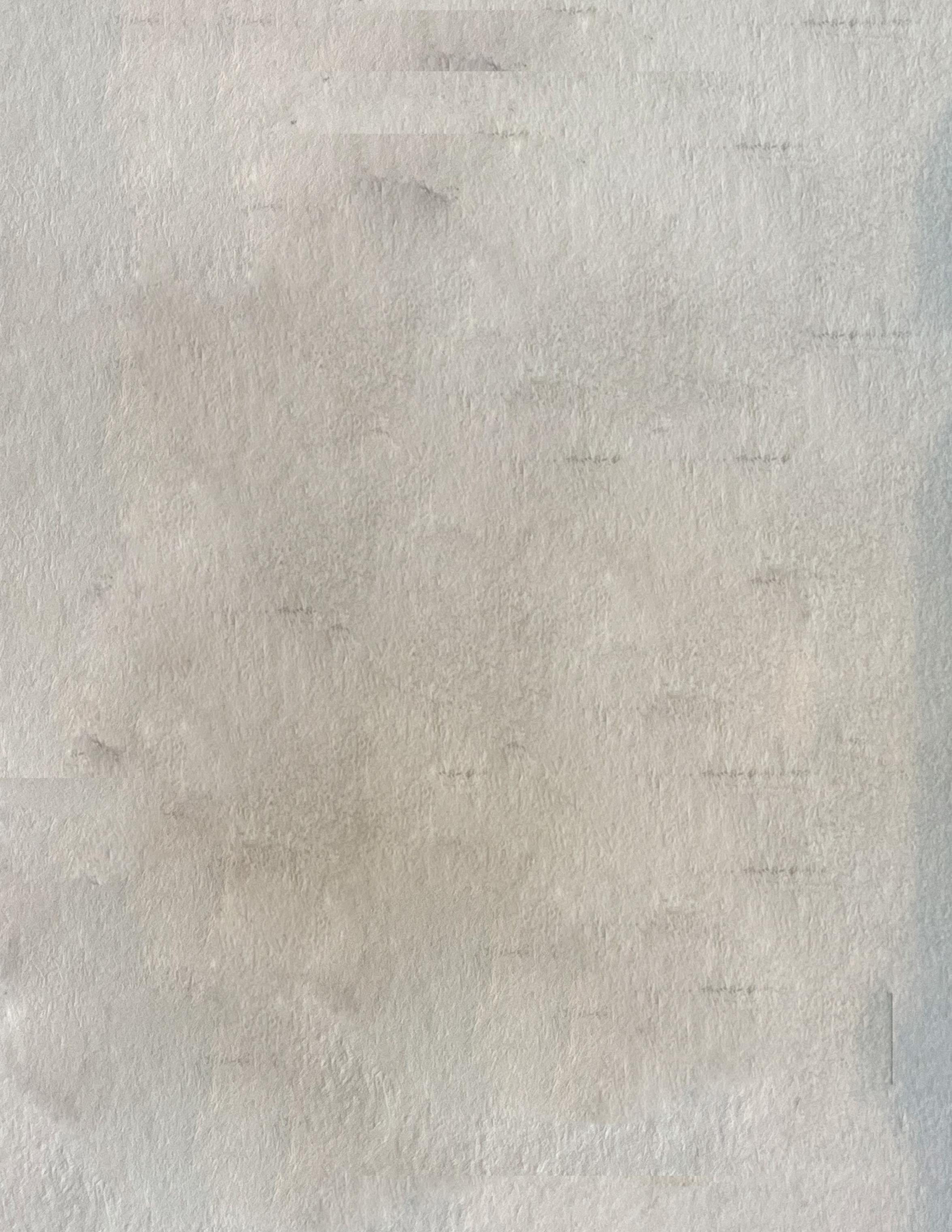
Since its inception in 1909, Chanel has become synonymous with a timeless yet classy and e ortless style born from the ingenuity of the brand’s eponym, Gabrielle “Coco” Chanel. The designer uniquely channeled her erce passion and love of practicality into inspirational pillars of high fashion, with many of her innovations continuing to be associated with elegant simplicity.
In 1924, Chanel transformed her turbulent a air with The Duke of Westminster into inspiration for a women’s suit made of tweed–the fabric that her lover o en wore. The tweed two-piece was revolutionary, turning a male fabric and silhouette into a women’s staple. Dubbed the “Chanel suit,” the speci c combination of textile and garment is as emblematic of the Chanel brand as their No. 5 perfume. In the past century, notable gures such as Jackie Kennedy and Oliva Rodrigo sported Chanel tweed sets at the White House, epitomizing the out t’s reputation as a sophisticated fashion choice in the most formal of settings.
Similarly, the “Little Black Dress,” coined in Chanel’s 1926 design published in Vogue, has been one of the most iconic yet accessible categories in fashion history. From Audrey Hepburn in Breakfast at Ti any’s and Princess Diana’s “revenge dress” to namesake categories in department stores like Nordstrom, the LBD is one of the few constants to grace every woman of taste’s wardrobe. Its simple silhouette and universally attering color allow for endless variations- anything from its original modest long-lined t to a modern body-contoured minidress is possible with this Chanel classic.

Unlike Chanel’s outdated moral compass, her designs have withstood the test of time, transcending her brand into all modes of style. While Chanel herself has fallen out of fashion, it is unlikely that her pieces, given their longevity and iconic status, will ever follow suit.



rapped in the lustrous embrace of a 16-strand Akoya pearl necklace, the art of accessorizing transcends mere fashion; it becomes a costume of opulence, a symphony of elegance that whispers tales of the glamorous era of Marilyn Monroe and Audrey Hepburn. The applied art form of this era, characterized by adorning multiple layers of pearls, cultivated magnetic and radiant characters. Each luminous and iridescent pearl threaded together can be spun into layers to achieve a heavy statement upon the neck or a more delicate arrangement cascading softly down the chest. Pearls were an integral and versatile Old Hollywood wardrobe piece that gave way to iconic looks. Marilyn Monroe’s final shoot for VOGUE, titled “The Last Sitting”, encapsulated her pure essence.
Written By Ava KokorosPearls were unconventionally wrapped around her face and intertwined in her mouth, symbolizing her natural femininity and timeless legacy. The provocative and intimate placement of the pearls further plays on the fantasy of her as a sex symbol and muse. Simultaneously, the use of pearls in a suffocating manner highlighted the enigma of Marilyn Monroe and her glamorous public facade where she was trapped within the confines of her own fame and beauty. Similarly,


Audrey Hepburn’s opening look from the lm Breakfast at Ti any’s consists of four thick strands of gleaming oversized pearls sitting high on her chest that drape elegantly down her back, juxtaposing her simplistic black dress. The eye-catching cinematic costume portrays her character’s aspiration for a luxurious lifestyle. Pearls have since transcended old Hollywood, to remain relevant in contemporary fashion as classic statements of sophistication and female empowerment. Throughout time, pearls have delved into the realm of artistry. From untouchable Hollywood characters to everyday fashion, pearls, natural or faux, have a rich history of adding a touch of theatrics to any ensemble, e ortlessly cra ing a dazzling and complex persona.
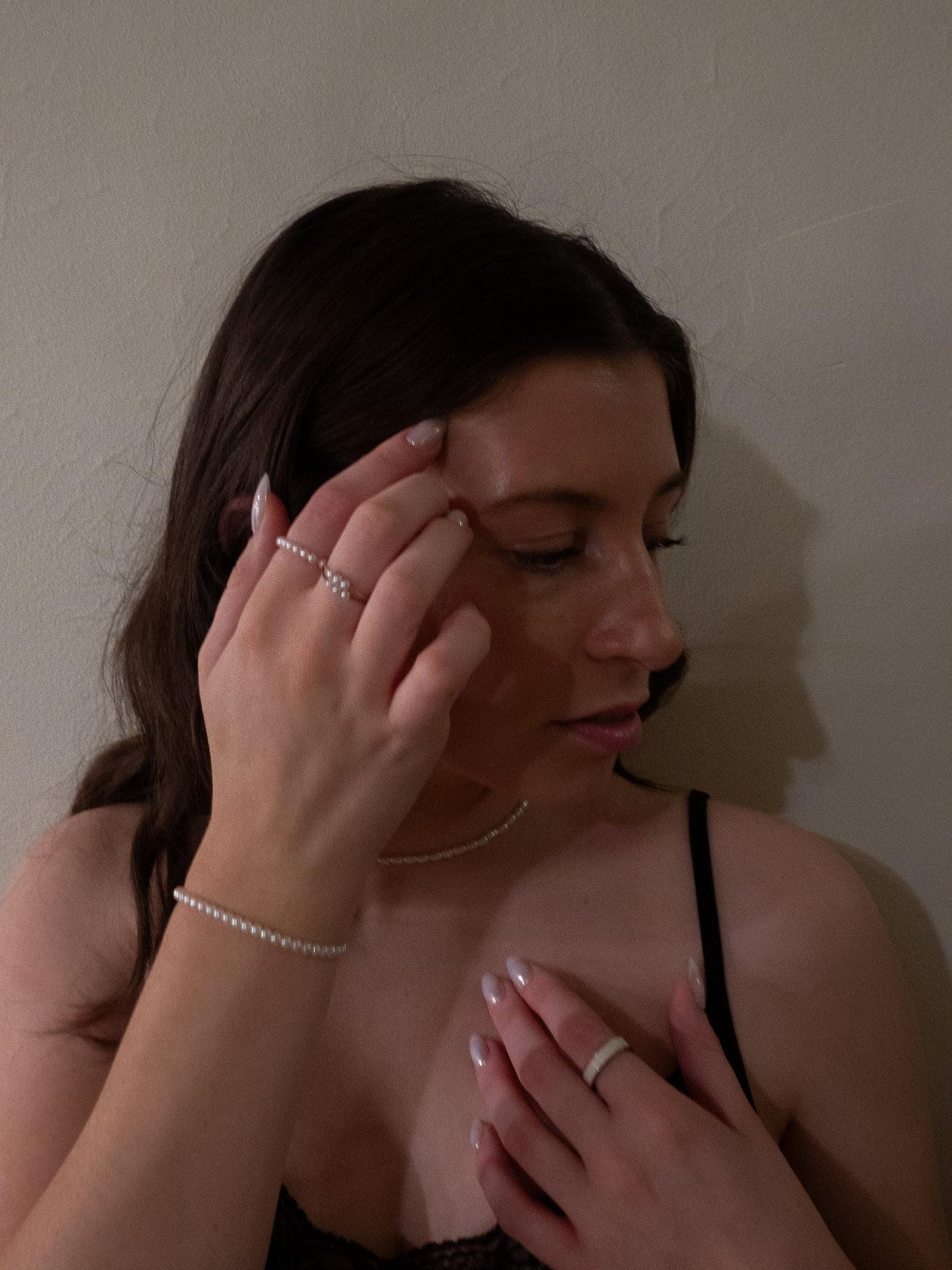

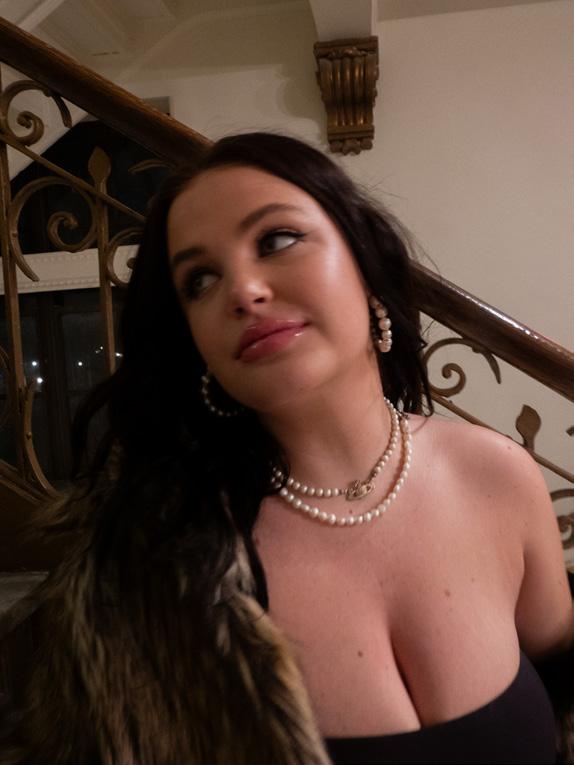
Photography By Anna Brown
Layout By Anna Brown
Makeup By Molly Fitzpatrick
Styled By Molly Fitzpatrick
Modeled By Molly Fitzpatrick, Mackenzie Neviaser, Ava Kokoros, Fiona Dunphy


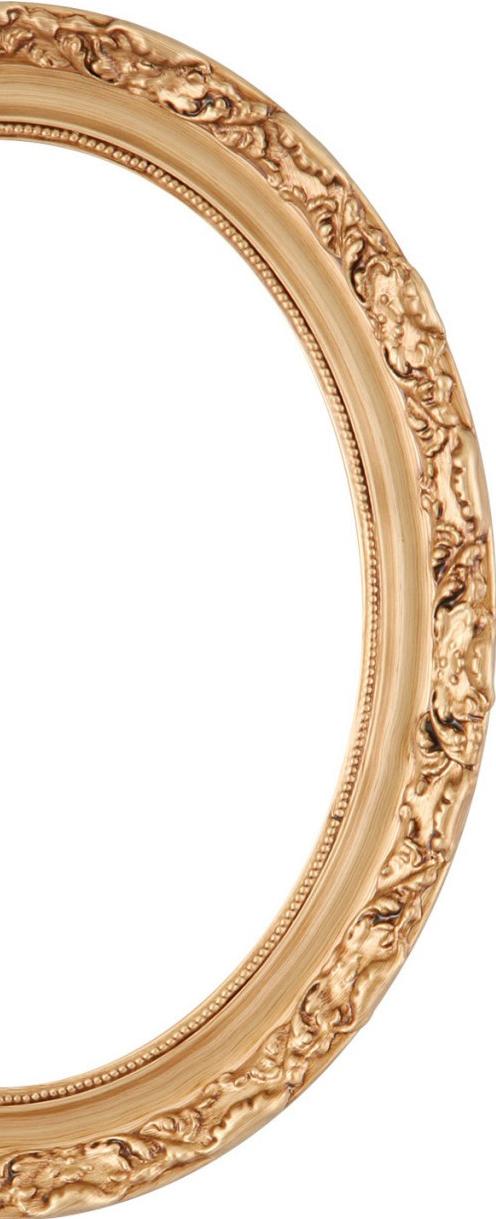

 WrittenbyErinPenders
WrittenbyErinPenders
Champagne - the word evokes a symphony of sensations: the delicate clink of crystal, the effervescent dance of bubbles, and the popping of the cork whisper of celebrations. Unlike many trends, champagne’s appeal transcends fleeting seasons, remaining a constant in the ever-evolving world of luxury. And what fuels this enduring allure? It’s the intrinsic link between luxury fashion and this sparkling wine, a connection as timeless as the celebration itself.
In its early days, champagne wasn’t always synonymous with luxury. In 16th-century France, winemakers considered the drink faulty, yet the novelty and inherent magic of the festive fizz made it increasingly popular among French royalty. Once declared the drink of choice by the Duke of Orleans, it only grew in popularity, with Monët being one of the first Champagne houses established. As champagne houses refined their craft, this defective novelty morphed into an exclusive symbol of taste. Champagne’s intrinsic sense of grandeur attracts leading luxury brands to collaborate with the product.
Louis Vuitton Monet Hennesy (LVMH) is a luxury French conglomerate formed in 1987 by merging fashion house Louis Vuitton, champagne house Monët, and cognac manufacturer Hennesy. The conglomerate’s principles of luxury and exclusivity have helped LVMH acquire over 75 luxury brands and create a holistic experience where fashion and champagne intertwine seamlessly.
The LVMH acquisition was not merely a marketing strategy but a celebration of excellence and “joie de vivre.” Fashion and champagne are each created by unique narratives informed by history and timeless craftsmanship. The pop of champagne on a runway or in a luxury boutique is a testament to the enduring power of luxury, where champagne and fashion have a timeless toast to celebration and artistry. The union of champagne and fashion will transcend fleeting seasons and remain constant in the ever-evolving world of luxury.
Photographed by Wesley Scott
Modeled by Maddie Thompson, Kaitlin Rigley, Juliana Huxtable, Sara Morales
Styled by Baba Sogbetun
Layout by Cindy Liu


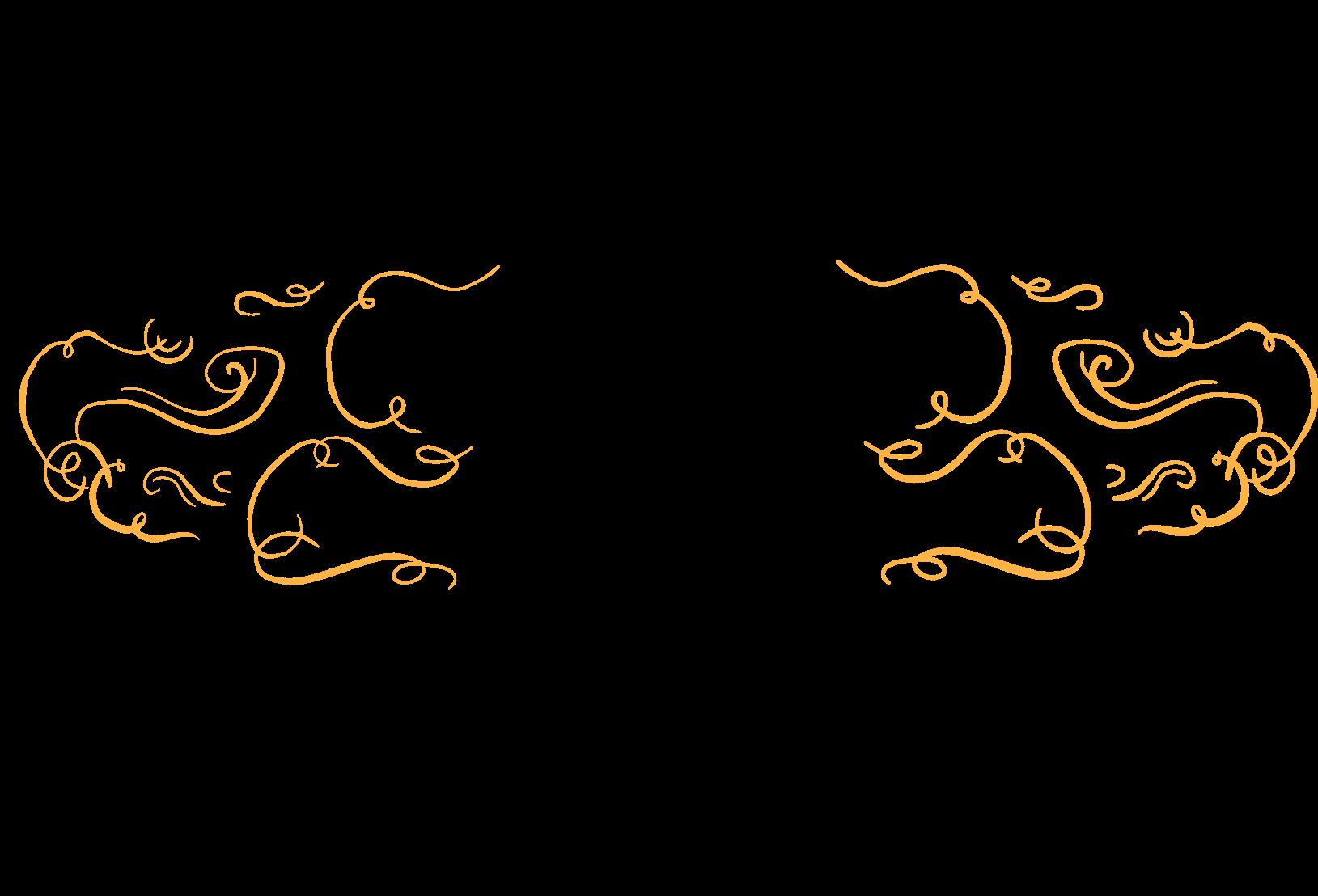
The peak of the relationship between film and fashion appears in the form of Audrey Hepburn holding a croissant while adorned in diamonds and pearls outside of Tiffany & Co. in Breakfast at Tiffany’s. This epochal shot wouldn’t be complete without what is arguably its most famed piece– the little black dress designed by Hubert de Givenchy. This may be Givenchy’s most famous Hepburn moment, but it is far from the only connection between the two. Starting on the set of Sabrina in the early 50s and spanning decades, Givenchy designed Hepburn’s wedding dress, created costumes for her most popular films, and made her the first celebrity perfume ambassador. Set against the backdrop of glimmering Old Hollywood and coinciding with an increasing public fascination with celebrities, the pair ended up becoming the most notable example of a designer/ muse relationship.
However, with the fashion and media landscapes completely changed from that of Hepburn’s prime, are there any comparable relationships today?
The idea of the muse is not one of the past; many of K-pop singer Jennie’s outfits may have been designed by Virginie Viard as a result of Jennie’s partnership with Chanel, and the same goes for popstar Dua Lipa and Donatella Versace.
Written by Brooke Swenson Layout By Madison LeserthPhotographed by Joshua
Auskalnismodelled by zoe gilson, kathryn koness, Morgan Mueller
Makeup by Nicole Castaneda



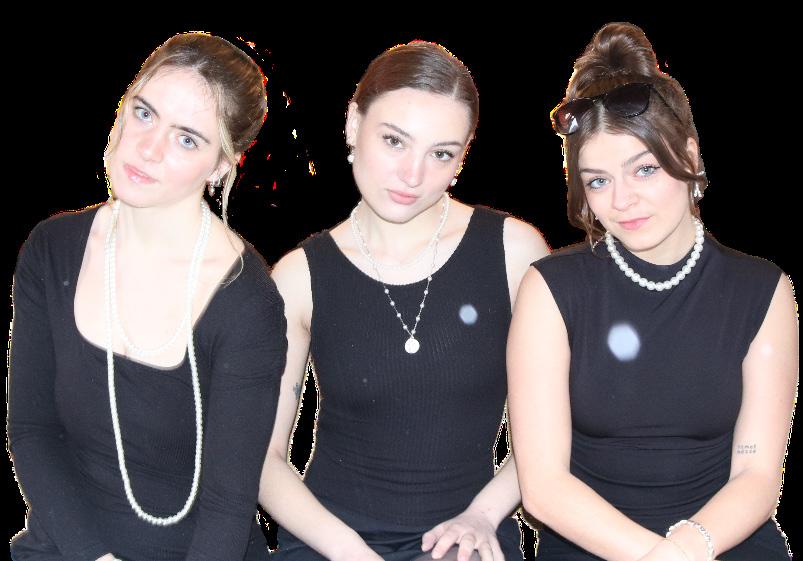
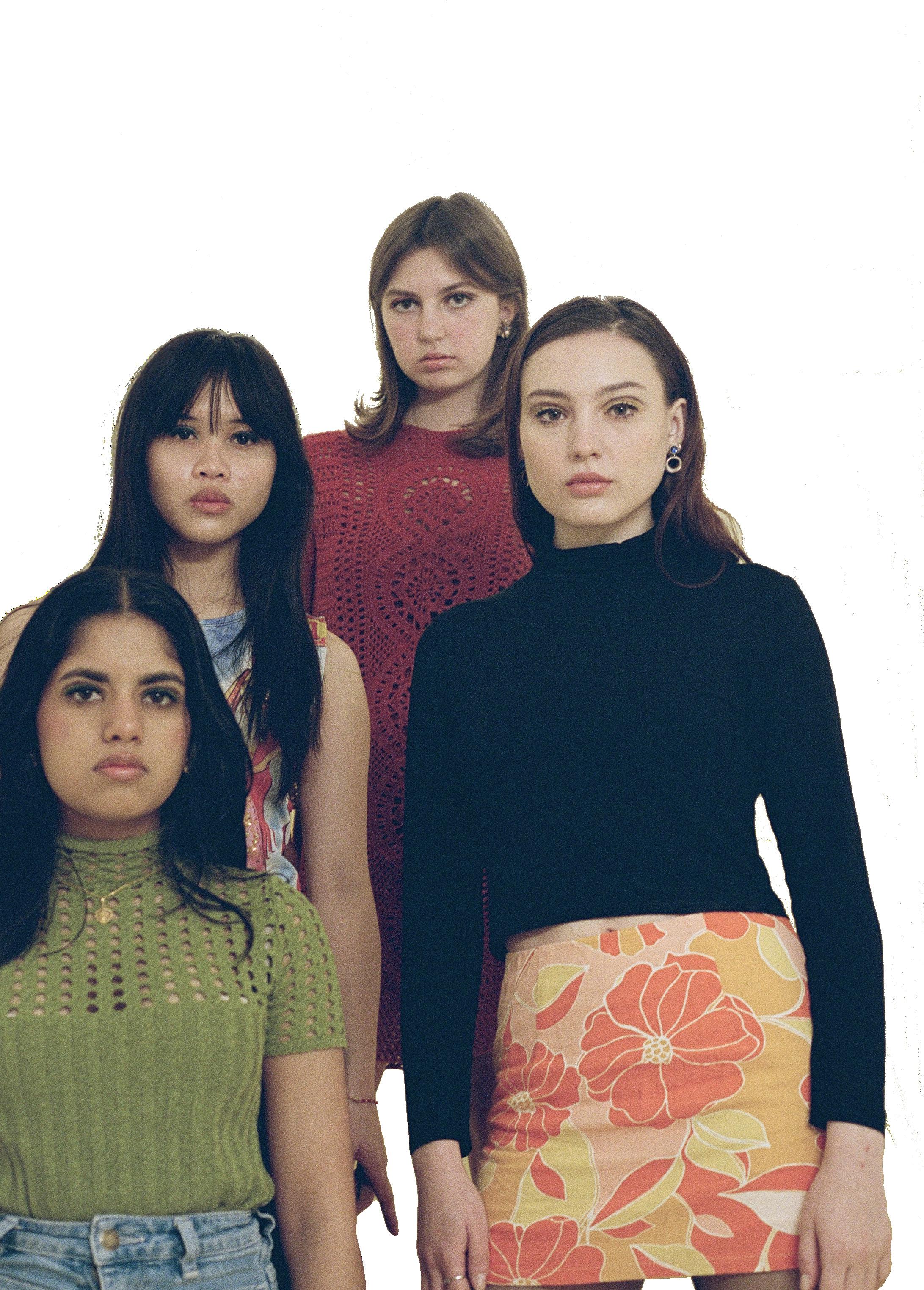

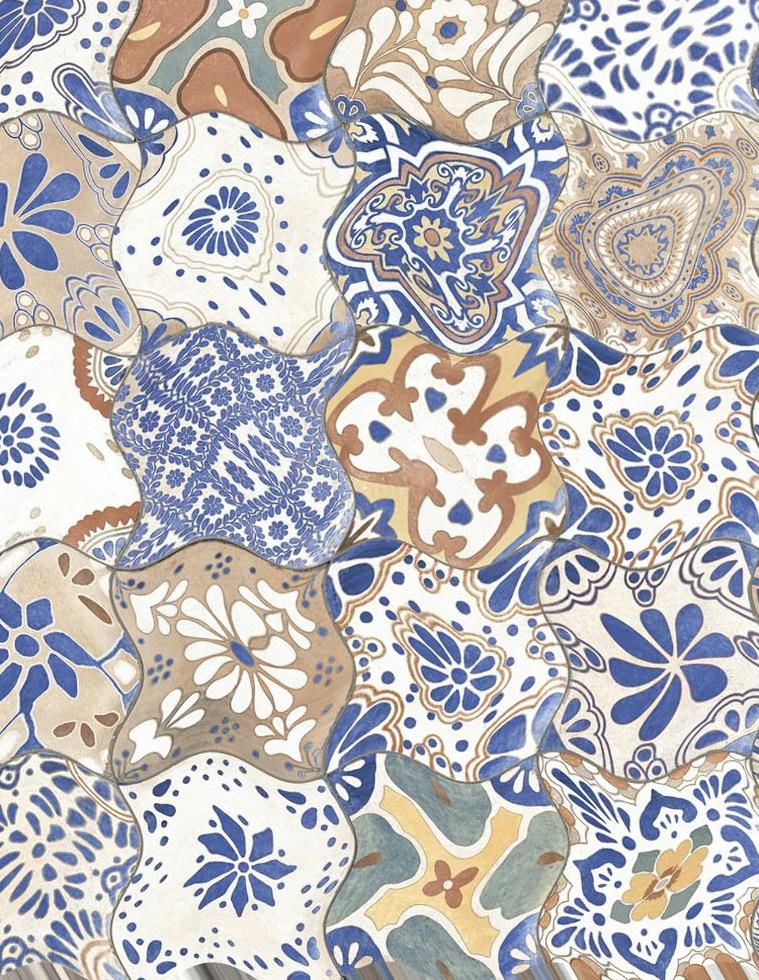

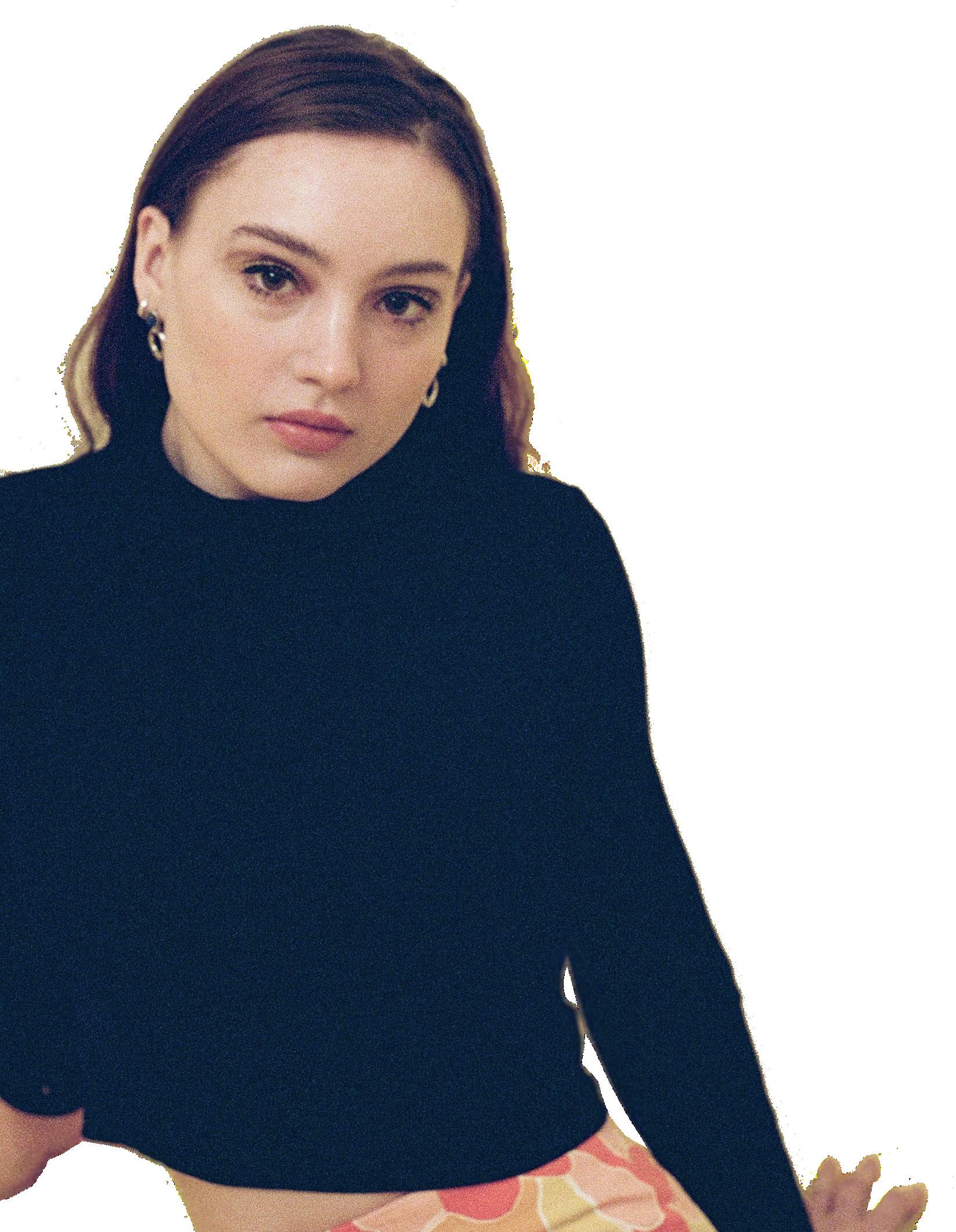

Article Written by: Chelsea DeLalla
Photographer: Lainey Nguyen
Models: Tara Castano, Zoe Gilson, Andrea
D’Souza, Chelsea Delalla
Stylist: Baba Sobgbetun
Makeup: Audrey Ho
Layout: Genevieve Vanston
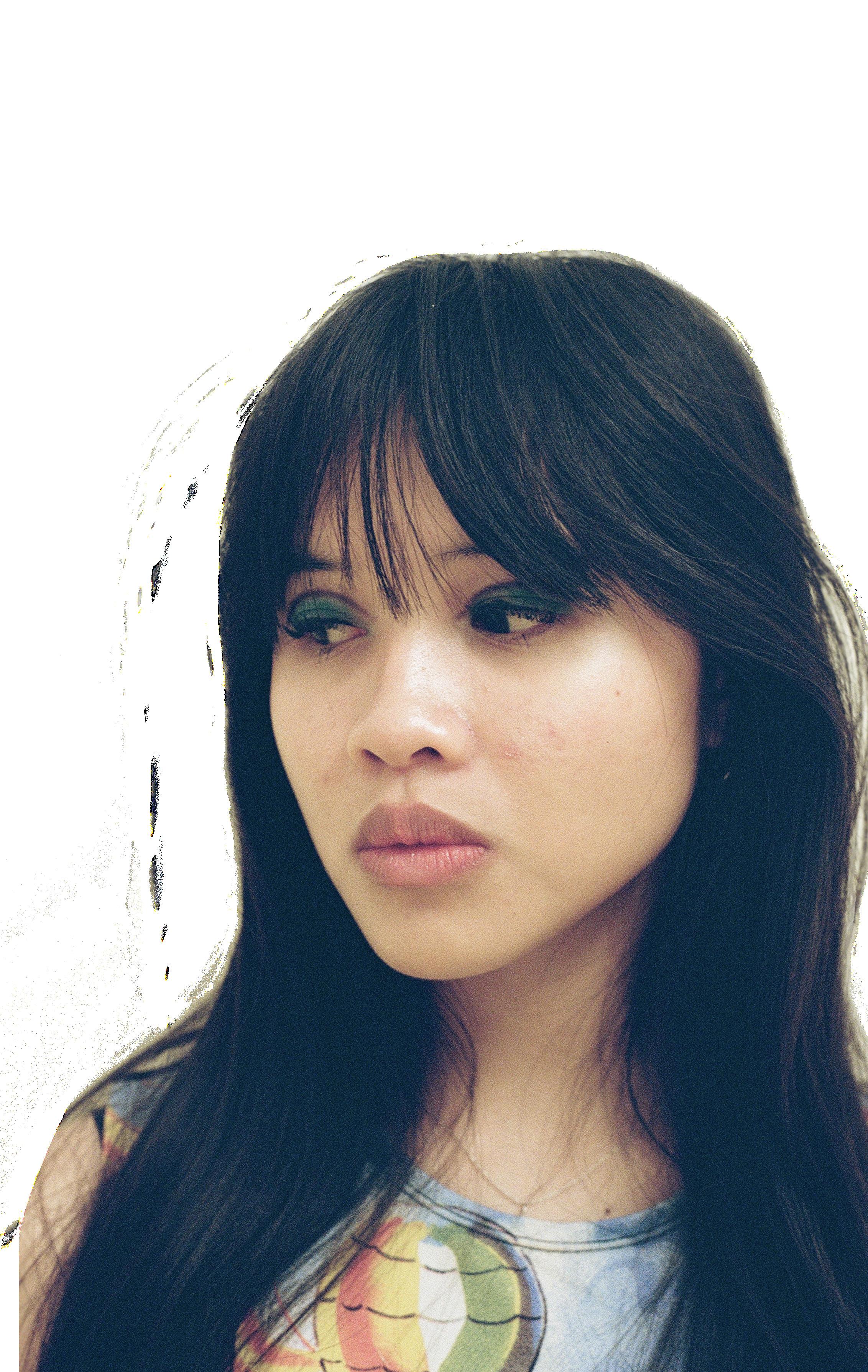

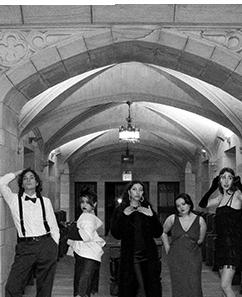

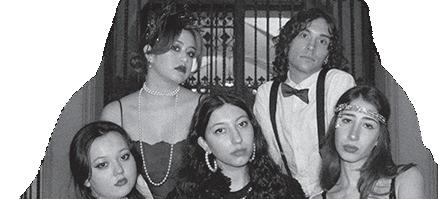


Layout by Jackie Kobeski
Photographs by Catalina Correa
Styling by Brooke Swenson
Modeling by Colleen Beding eld, Daniella Grono, Natalia Alvarez


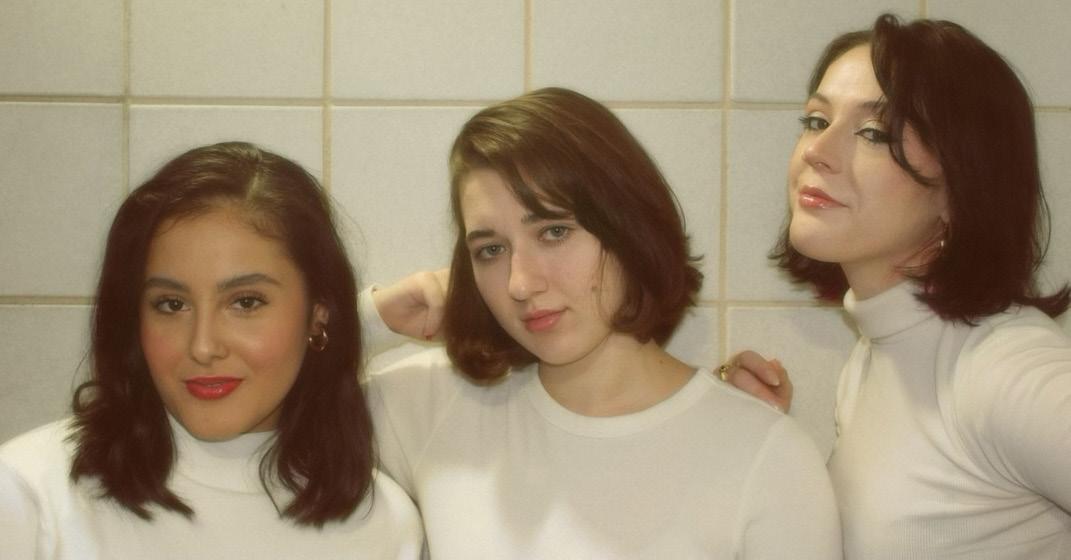
In the ever-evolving world of fashion and beauty, trends often come and go, but some styles have a way of making a comeback, proving their timeless appeal. One such trend that is currently making waves in the world of hair is the soft voluminous bob. With its effortless elegance and versatility, this classic haircut is once again taking center stage not only on runways and red carpets, but also in everyday homes and the streets alike.
The soft voluminous bob, characterized by its chin-length or slightly longer cut with layers that add volume and movement, first gained popularity in the 1960s. It experienced a resurgence in the 1990s and early 2000s, favored by celebrities like Victoria Beckham and Katie Holmes. Now, in the 2020s, it’s reclaiming its status as a must-have hairstyle and has been seen on celebrities such as Hailey Bieber and Meredith Duxbury. What sets the soft voluminous bob apart is its adaptability to different face shapes and hair textures. Whether straight, wavy, or curly, this style can be tailored to suit individual preferences, making it accessible

to a wide range of people. Additionally, its low-maintenance nature appeals to those seeking a chic yet practical look.
On social media platforms like Instagram and TikTok, hairstylists and influencers are sharing tutorials and styling tips, inspiring people to embrace this iconic haircut and even coining the new endearing term, “the f*** a** bob”. However, there are definitely a few hilarious and unfortunate clips of people attempting to achieve this style themselves, and something goes terribly wrong.
As we continue to navigate the ever-changing landscape of beauty trends, it’s refreshing to see the return of a classic favorite like the soft voluminous bob. Its effortless charm and timeless appeal make it a style worth embracing for years to come. So, whether you’re looking for a bold change or simply seeking inspiration for your next haircut, consider giving the soft voluminous bob a try—you won’t be disappointed.
Written By Molly Fitzpatrick

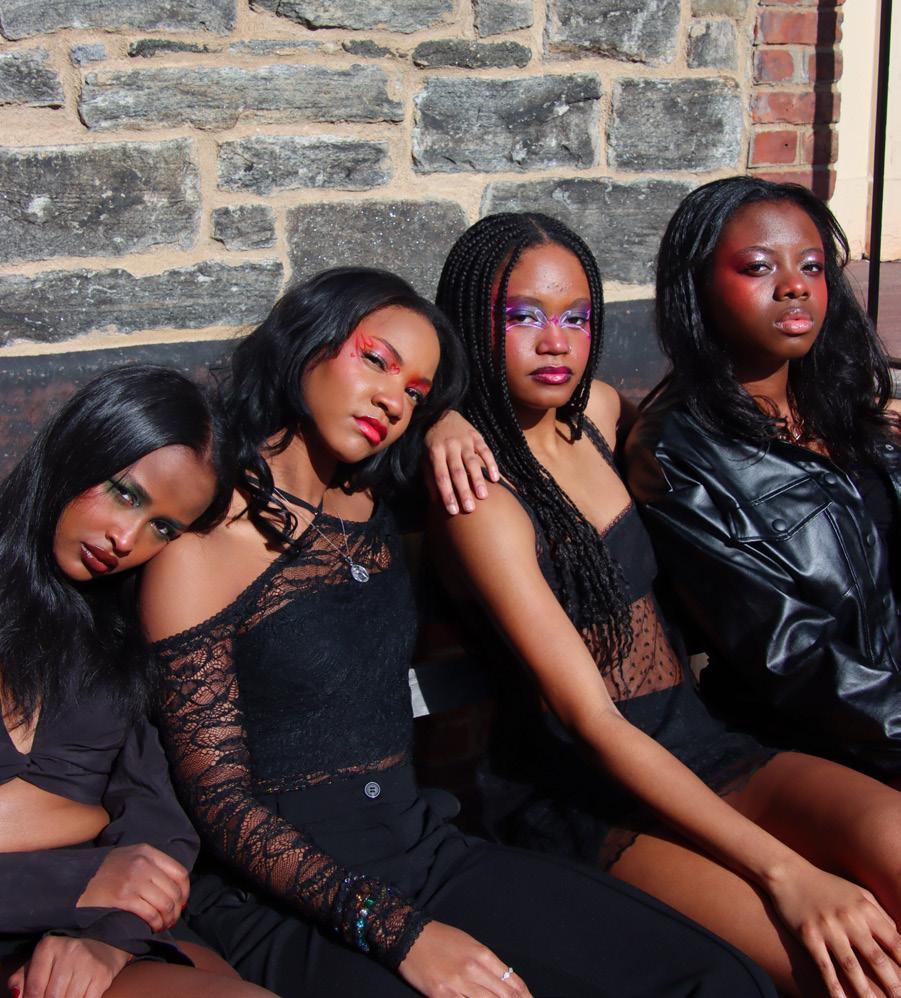
e can accredit so many trends and obsessions in the beauty industry directly to Pat McGrath. She is the head of a female and Black owned billion-dollar beauty company. Celebrities argue over who gets to use Pat McGrath. She has created this entire empire through innovation. When Pat couldn’t find a powder dark enough for her skin tone, she used cocoa powder. Throughout her career, Pat McGrath has held one motto above all else: “If you can’t find it, you can’t buy it. Make it!”
Pat McGrath did just that. Ever since she was younger, she was obsessed with creating her own DIY products. She kept working and creating unique products that couldn’t be found anywhere else. She got her name out in the industry through innovation and creativity.
This doesn’t mean that her success came without hardship. McGrath launched to popularity during a time when whiteness and skinniness were valued above all else in this industry. Despite the obstacles, she kept putting her work out there and proving her talent. Today, she is viewed as one of, if not the, first successful Black female makeup artist.
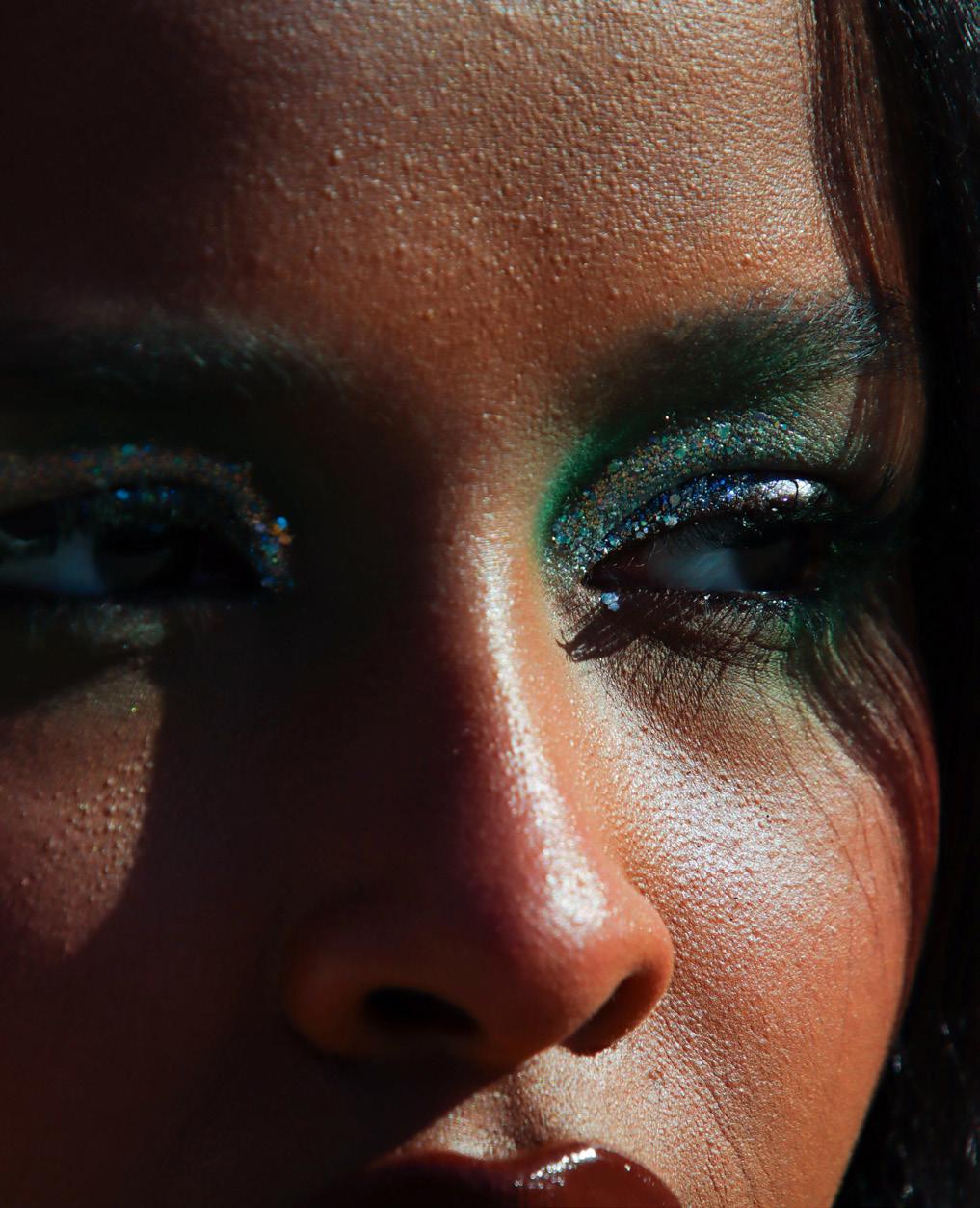

Pat McGrath has used her innovative artistry to heighten the experience of runway shows. For years, she has created memorable runway looks for some of the most iconic fashion houses in the world, like Givenchy and Valentino. Most recently, she teamed up with Maison Margiela to create a look she refers to as “Glass Skin.” Since then, people all over the internet have attempted to recreate the look, as they do with any of her iconic looks.
Pat McGrath is responsible for so much of the creativity and growth we see in the beauty industry. She opts for bold glitters and decorates the eyes and lips in materials like crystals or sequins. She believes in makeup-as-jewelry. Modern day bold glamor cannot be thoroughly appreciated without acknowledgement of Pat McGrath and her in uences.
Photography By Sophia Rivera-Korver
Modeled By Warda Hassan, Danielle Henderson, Morgan Jones, Janel Codjoe
Makeup By Nicole Castaneda
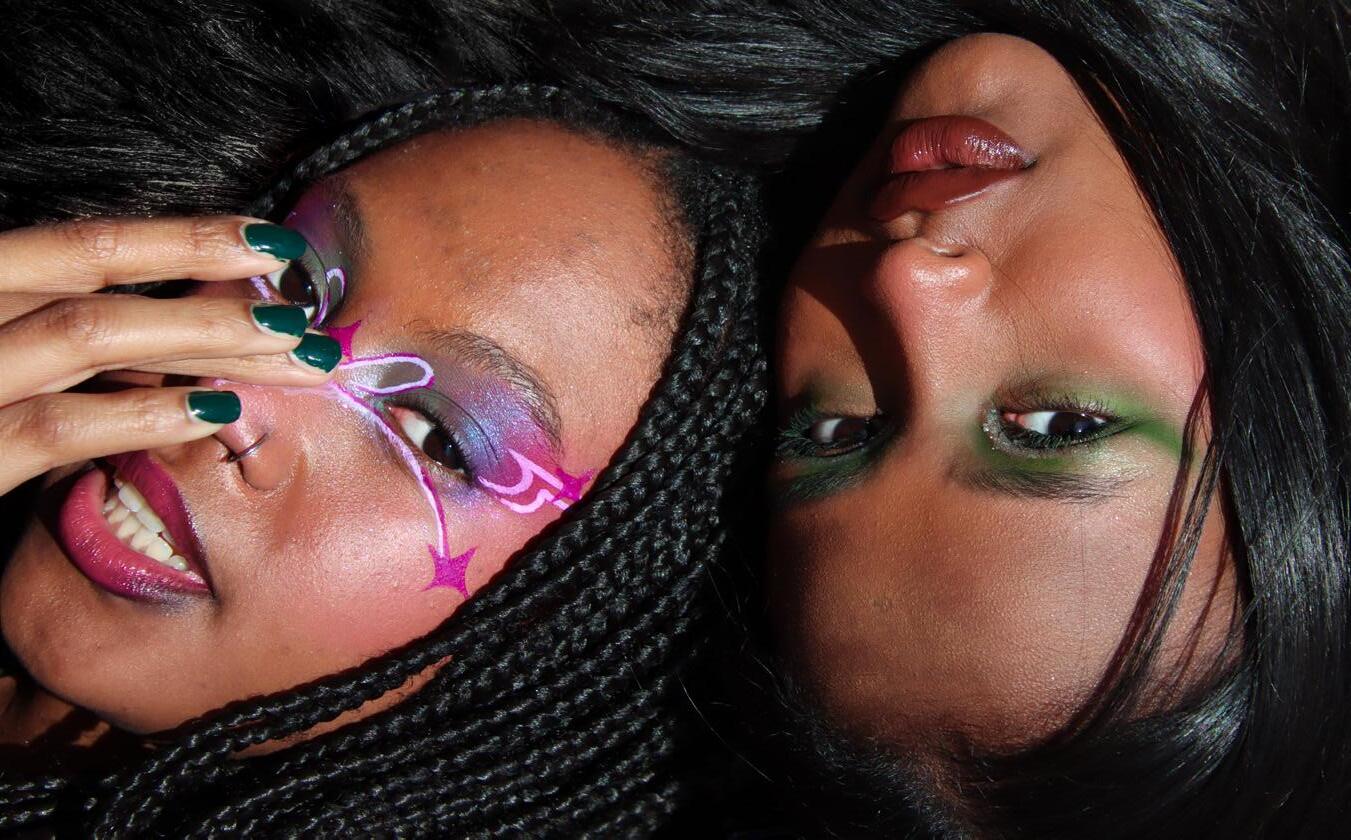

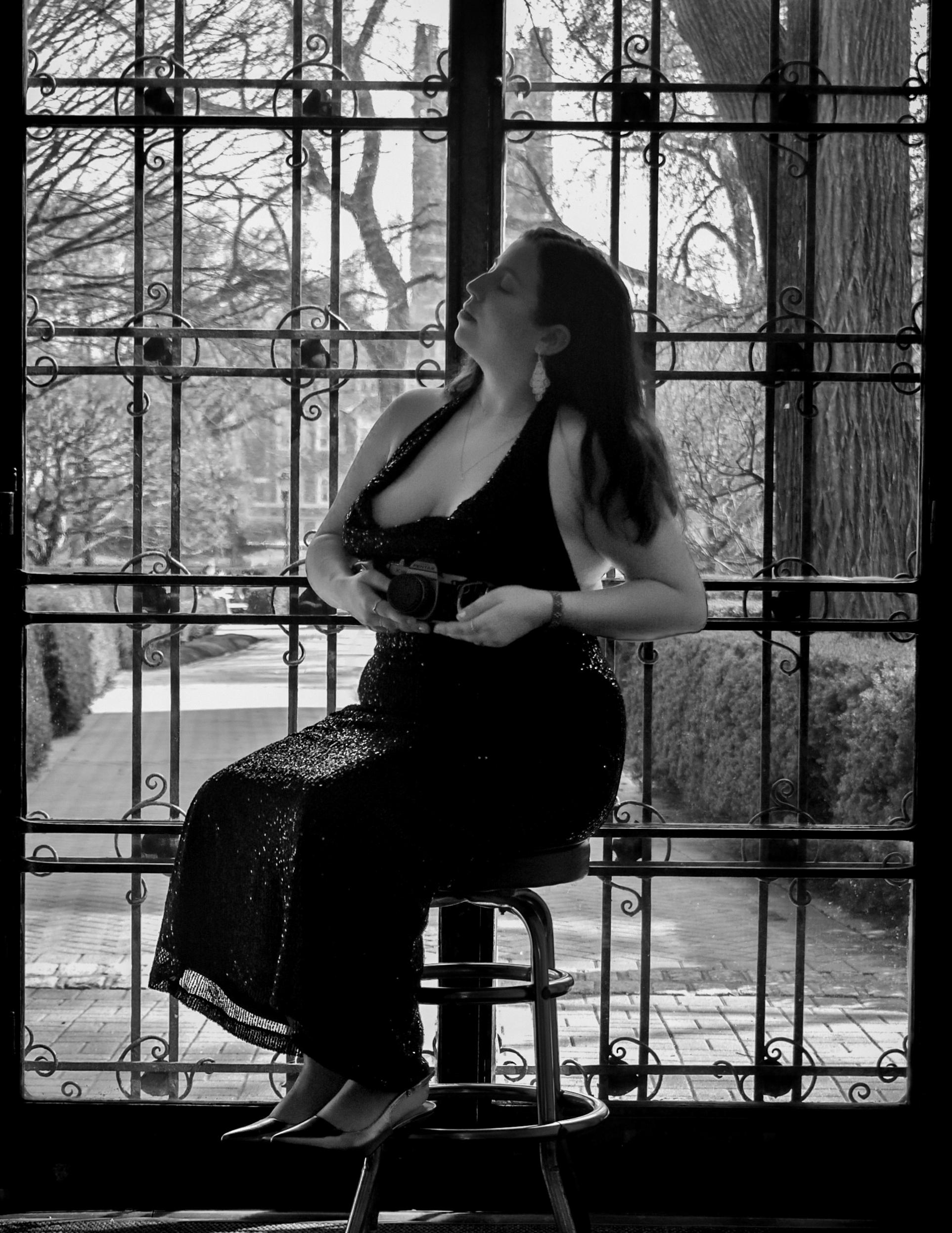
Fordham University’s Fashion and Lifestyle Magazine